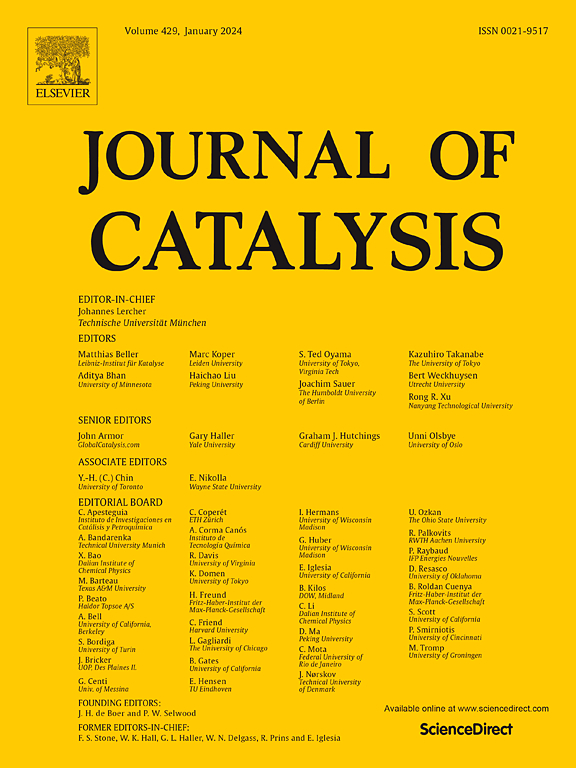Engineering lytic polysaccharide monooxygenases (LPMOs) for immobilisation on carbon nanotubes
IF 6.5
1区 化学
Q2 CHEMISTRY, PHYSICAL
引用次数: 0
Abstract
Lytic polysaccharide monooxygenases (LPMOs) are mononuclear copper-containing enzymes that are able to oxidise C–H bonds in the glycoside linkages of polysaccharides. However, LPMOs are prone to oxidative damage, particularly in the absence of an adequate substrate. In this work, we investigated whether we could immobilise LPMOs and whether such immobilisation could enhance the stability of LPMOs while preserving the essential catalytic properties of the copper active site. Two LPMOs from different families, LsAA9A and ScAA10C, were selected and immobilised on carboxylic acid functionalised multiwalled-CNTs, using a two-step carbodiimide activation reaction. To improve the frequency of enzyme immobilisation and guide site-specific orientation, the enzymes were engineered, introducing two lysine residues on two different loops on the LPMO surface. Assessment of the oxidase and peroxidase activities of the LPMO-MWCNT bioconjugates showed that immobilisation of the engineered LPMO was much more efficient compared to the wild-type enzymes. The immobilised enzymes still showed activity on several substrates, confirming retained catalytic competence following immobilisation. Incubation of the free and immobilised LPMOs under damaging conditions indicated a protective effect of immobilisation for LsAA9A-MWCNT, indicating that, for some LPMOs, immobilisation on MWCNTs may protect against oxidative damage.


求助全文
约1分钟内获得全文
求助全文
来源期刊

Journal of Catalysis
工程技术-工程:化工
CiteScore
12.30
自引率
5.50%
发文量
447
审稿时长
31 days
期刊介绍:
The Journal of Catalysis publishes scholarly articles on both heterogeneous and homogeneous catalysis, covering a wide range of chemical transformations. These include various types of catalysis, such as those mediated by photons, plasmons, and electrons. The focus of the studies is to understand the relationship between catalytic function and the underlying chemical properties of surfaces and metal complexes.
The articles in the journal offer innovative concepts and explore the synthesis and kinetics of inorganic solids and homogeneous complexes. Furthermore, they discuss spectroscopic techniques for characterizing catalysts, investigate the interaction of probes and reacting species with catalysts, and employ theoretical methods.
The research presented in the journal should have direct relevance to the field of catalytic processes, addressing either fundamental aspects or applications of catalysis.
 求助内容:
求助内容: 应助结果提醒方式:
应助结果提醒方式:


